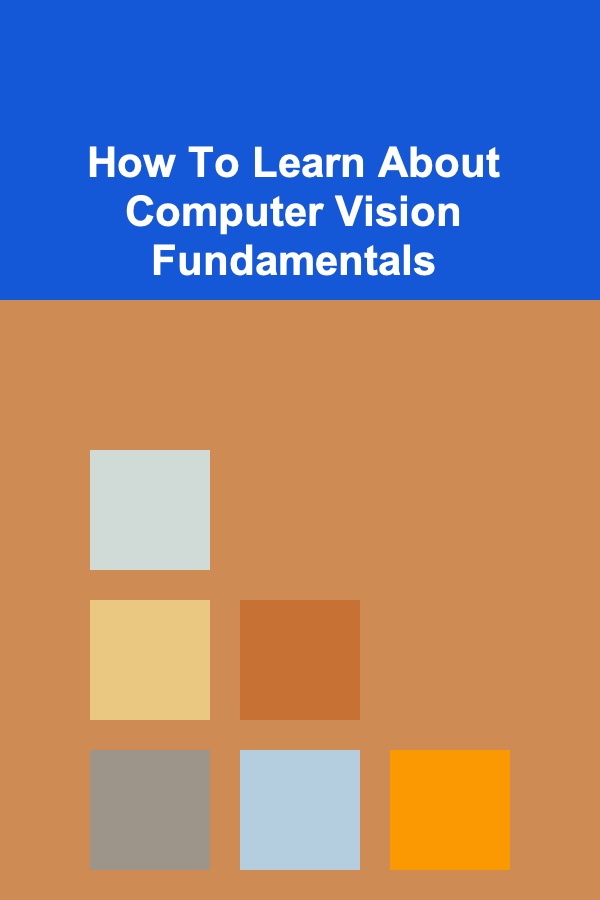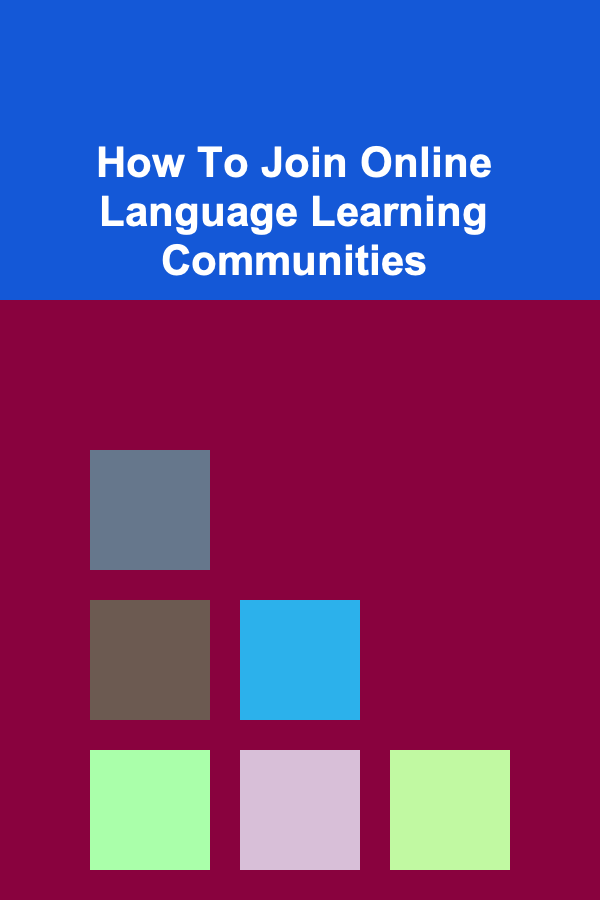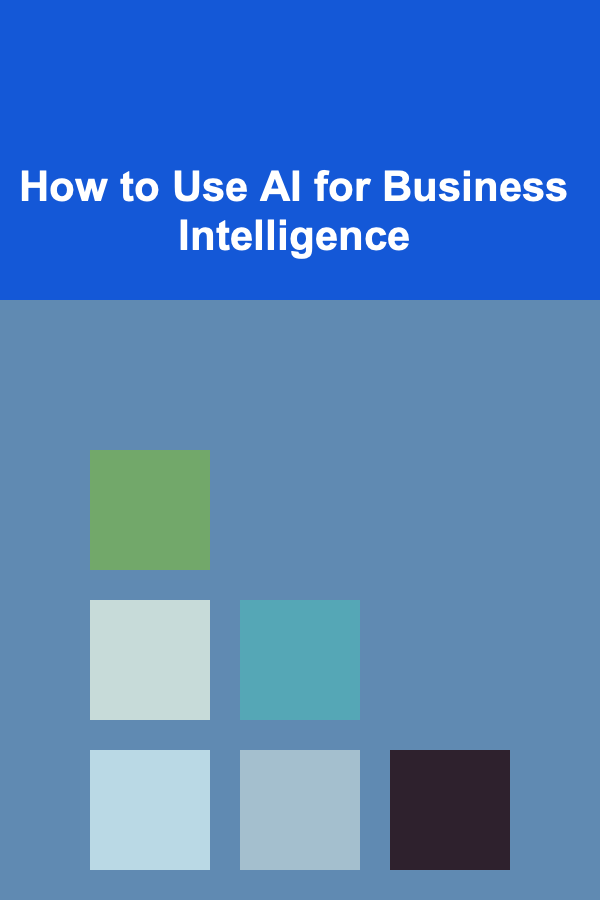
How To Learn About Computer Vision Fundamentals
ebook include PDF & Audio bundle (Micro Guide)
$12.99$11.99
Limited Time Offer! Order within the next:

Computer vision (CV) is an interdisciplinary field of artificial intelligence (AI) that focuses on enabling machines to interpret and make decisions based on visual data, much like how humans perceive and understand the world around them. It has applications ranging from facial recognition and autonomous vehicles to medical imaging and industrial robotics. Understanding computer vision fundamentals can open doors to many exciting career opportunities and is an essential part of the AI and machine learning (ML) toolkit.
This guide provides a deep dive into the fundamental concepts, techniques, and resources to help you get started with computer vision. Whether you are a beginner or someone looking to expand your knowledge, this article will cover everything from the foundational theory to the practical skills needed to excel in this field.
Understanding the Basics of Computer Vision
Before delving into the technical aspects of computer vision, it's important to understand what computer vision is and why it's essential.
What is Computer Vision?
At its core, computer vision is the science of enabling computers and systems to interpret and understand images, videos, and other visual inputs. This includes tasks such as recognizing objects, detecting faces, analyzing motion, and reconstructing 3D scenes.
The goal of computer vision is to automate the human visual perception process. Just as humans use their eyes to gather information and their brains to process it, computer vision systems aim to interpret visual data through algorithms and models. These systems rely on machine learning techniques, particularly deep learning, to perform complex tasks.
Key Applications of Computer Vision
Computer vision has found applications across various industries, including:
- Autonomous Vehicles: Self-driving cars use computer vision to recognize obstacles, pedestrians, traffic signs, and lane markings, enabling safe navigation.
- Healthcare: Medical imaging technologies rely on computer vision to analyze X-rays, MRIs, and CT scans to detect diseases and abnormalities.
- Surveillance: CCTV systems use facial recognition and motion detection to monitor and track individuals in real-time.
- Retail: Automated checkout systems and inventory management tools leverage computer vision for product recognition and stock monitoring.
- Manufacturing: In industrial settings, computer vision systems are used for quality control and to monitor production lines.
Understanding these applications is key to grasping the significance of computer vision in today's technology landscape.
Core Concepts in Computer Vision
To learn about computer vision, you need to first familiarize yourself with some core concepts. These concepts lay the foundation for understanding how computer vision systems work and what challenges they face.
1. Image Processing
Image processing is a crucial step in computer vision. It involves manipulating an image to extract useful information or enhance its quality. Some basic image processing operations include:
- Image Filtering: Enhancing an image by reducing noise, blurring, or sharpening.
- Edge Detection: Identifying boundaries within an image (for example, detecting the edges of an object).
- Thresholding: Converting an image into a binary format, where the pixels are either black or white depending on a threshold value.
- Morphological Operations: Used to remove noise or fill gaps in images through operations like dilation and erosion.
2. Feature Extraction
In computer vision, features are the distinctive patterns or characteristics of an image that help identify or recognize objects. Feature extraction involves detecting and describing these key features. Common techniques include:
- SIFT (Scale-Invariant Feature Transform): Detects and describes local features in an image, which can be used for object recognition and image stitching.
- HOG (Histogram of Oriented Gradients): Used for object detection, particularly in the context of pedestrian detection.
- SURF (Speeded-Up Robust Features): Similar to SIFT but faster and more robust to noise.
Feature extraction is a crucial part of many computer vision tasks like object detection, recognition, and tracking.
3. Object Detection and Recognition
Object detection is the task of identifying objects within an image and localizing them by drawing bounding boxes around them. It involves two main steps:
- Classification: Identifying what objects are present in an image.
- Localization: Determining the location of these objects within the image.
Some popular algorithms for object detection include:
- Haar Cascades: A classical approach used for real-time face detection.
- YOLO (You Only Look Once): A modern and efficient object detection algorithm that can detect multiple objects in real-time.
- Faster R-CNN (Region-based Convolutional Neural Network): A deep learning-based approach to object detection that improves upon traditional CNNs by incorporating region proposals.
4. Image Segmentation
Image segmentation is the process of dividing an image into meaningful segments or regions. It plays a vital role in understanding the structure of an image and in tasks like object tracking, scene understanding, and medical imaging.
Segmentation can be done in several ways:
- Thresholding-based Segmentation: Using pixel intensity values to separate objects from the background.
- Edge-based Segmentation: Using edges to segment an image into regions.
- Region-based Segmentation: Dividing an image based on homogeneity of color, texture, or other features.
5. Optical Flow and Motion Detection
Motion detection is essential for tasks like video analysis and autonomous navigation. Optical flow refers to the pattern of apparent motion of objects in a visual scene, based on the movement of pixels across successive frames.
By analyzing optical flow, computer vision systems can track moving objects and estimate their trajectories, which is useful in applications like video surveillance, robotics, and augmented reality.
Deep Learning in Computer Vision
While traditional computer vision methods based on image processing and feature extraction have been effective for many tasks, deep learning has revolutionized the field in recent years. Convolutional Neural Networks (CNNs) and other deep learning models have surpassed traditional methods in terms of accuracy and efficiency.
Convolutional Neural Networks (CNNs)
CNNs are a class of deep neural networks designed specifically for processing grid-like data such as images. They consist of several layers, including:
- Convolutional Layers: These layers apply filters to an image to extract features like edges, textures, and shapes.
- Pooling Layers: These layers reduce the spatial dimensions of an image, making the network more efficient and resistant to overfitting.
- Fully Connected Layers: These layers combine features learned by previous layers and make final predictions.
CNNs are the foundation of modern computer vision tasks, including image classification, object detection, and segmentation.
Transfer Learning
In practice, training deep learning models from scratch can be computationally expensive and time-consuming. Transfer learning is a technique that leverages pre-trained models (usually trained on large datasets) and fine-tunes them for specific tasks. This method saves time and resources and is widely used in computer vision applications.
Popular pre-trained models include:
- VGG16: A deep CNN model that has been successful in image classification tasks.
- ResNet: A model that introduces skip connections to enable deeper networks.
- Inception: A model that uses multiple filter sizes at each layer to capture different features at various scales.
Generative Adversarial Networks (GANs)
GANs are a class of machine learning models used to generate synthetic images that are indistinguishable from real ones. GANs have gained popularity in computer vision tasks like image generation, style transfer, and image enhancement. They consist of two parts:
- Generator: Creates synthetic images.
- Discriminator: Attempts to distinguish between real and fake images.
Through an adversarial process, both the generator and discriminator improve, leading to realistic image generation.
Practical Skills and Tools for Learning Computer Vision
To gain a deeper understanding of computer vision, hands-on experience is essential. Below are some tools, libraries, and frameworks that will help you get started.
1. Python and OpenCV
Python is the most commonly used programming language in computer vision due to its simplicity and the extensive availability of libraries. OpenCV (Open Source Computer Vision Library) is one of the most popular libraries for computer vision tasks. It provides functions for image processing, object detection, and camera calibration, among others.
To get started with OpenCV, you can install the library using pip:
Once installed, you can begin experimenting with basic image processing tasks such as reading, displaying, and manipulating images.
2. TensorFlow and PyTorch
For deep learning tasks in computer vision, two popular frameworks are TensorFlow (by Google) and PyTorch (by Facebook). Both frameworks offer robust support for CNNs, transfer learning, and other machine learning techniques.
- TensorFlow: A comprehensive open-source framework for building machine learning models. TensorFlow's Keras API is widely used for building CNNs for computer vision.
- PyTorch: A flexible deep learning framework known for its dynamic computational graph, which makes it easier to experiment with models. PyTorch is widely preferred in research settings.
3. Jupyter Notebooks
Jupyter Notebooks provide an interactive environment for running Python code and visualizing data. They are particularly useful when experimenting with computer vision models, allowing you to test algorithms and visualize the results immediately.
4. Datasets for Computer Vision
To train and evaluate computer vision models, you need access to large datasets. Some popular datasets include:
- MNIST: A dataset of handwritten digits commonly used for training image classification models.
- COCO (Common Objects in Context): A large-scale dataset with images containing multiple objects annotated with object detection and segmentation information.
- ImageNet: A vast dataset used for training image classification models with over a million images labeled with 1,000 object categories.
5. Kaggle Competitions
Kaggle is a platform for data science competitions that often features challenges related to computer vision. Participating in Kaggle competitions can help you hone your skills by working with real-world datasets and solving problems posed by the community.
Conclusion
Learning computer vision fundamentals is an exciting journey that opens up a wide range of possibilities. With the growing applications of AI and machine learning, computer vision is an indispensable tool in today's technology landscape. Whether you are a beginner or an experienced practitioner, understanding the core concepts, techniques, and tools of computer vision is essential for building robust systems capable of interpreting the visual world.
By building a solid foundation in image processing, machine learning, and deep learning, and getting hands-on experience with libraries like OpenCV, TensorFlow, and PyTorch, you can develop the skills necessary to create impactful computer vision applications. With dedication, practice, and continuous learning, you can stay ahead of the curve in this ever-evolving field.

How to Build a Checklist for Catering and Menu Planning
Read More
How to Create a Checklist for Organizing Receipts and Invoices
Read More
How To Join Online Language Learning Communities
Read More
How to Set Up a Toy Swap with Friends for Variety
Read More
Mastering Research Analysis: A Comprehensive Guide for Aspiring Analysts
Read More
How to Use AI for Business Intelligence
Read MoreOther Products

How to Build a Checklist for Catering and Menu Planning
Read More
How to Create a Checklist for Organizing Receipts and Invoices
Read More
How To Join Online Language Learning Communities
Read More
How to Set Up a Toy Swap with Friends for Variety
Read More
Mastering Research Analysis: A Comprehensive Guide for Aspiring Analysts
Read More